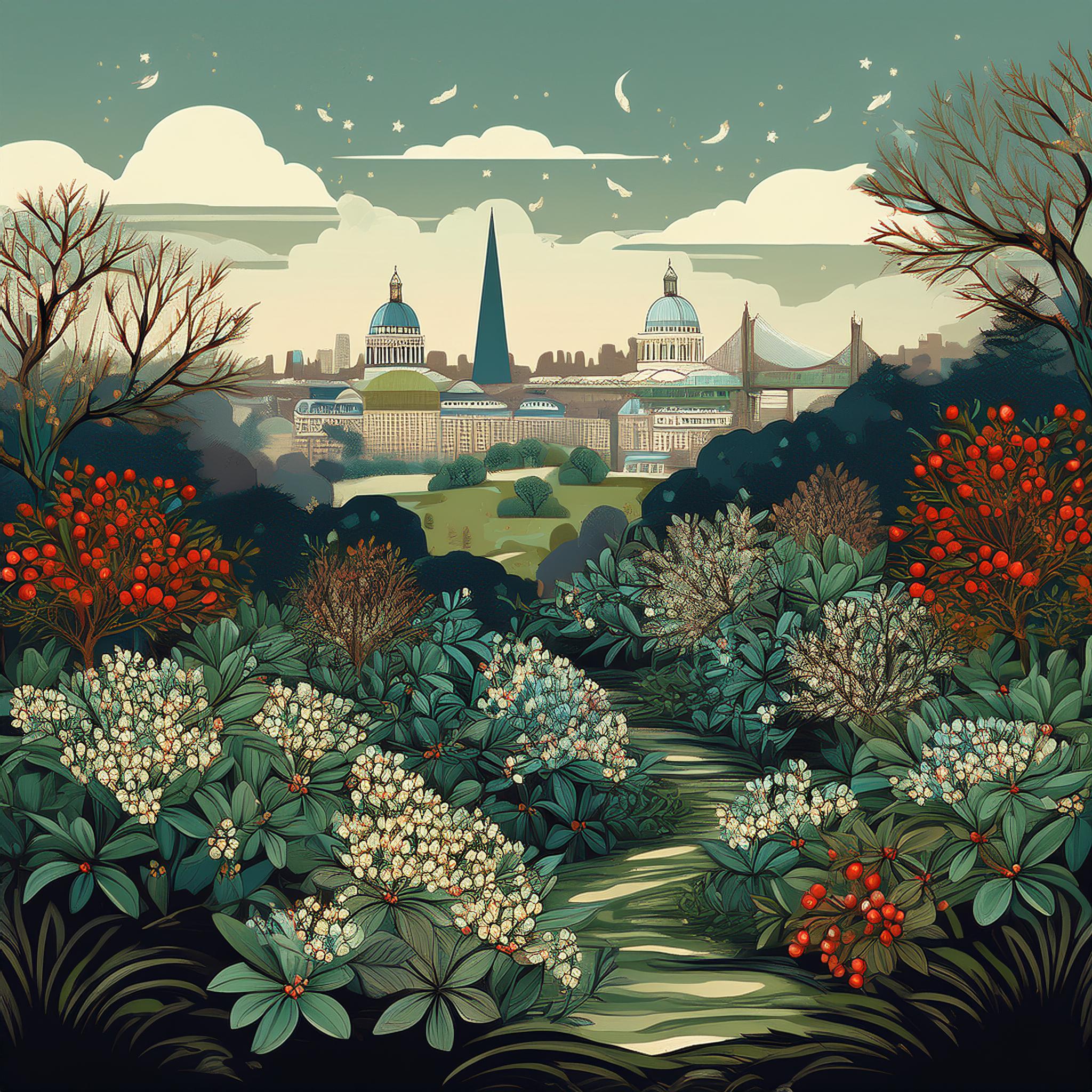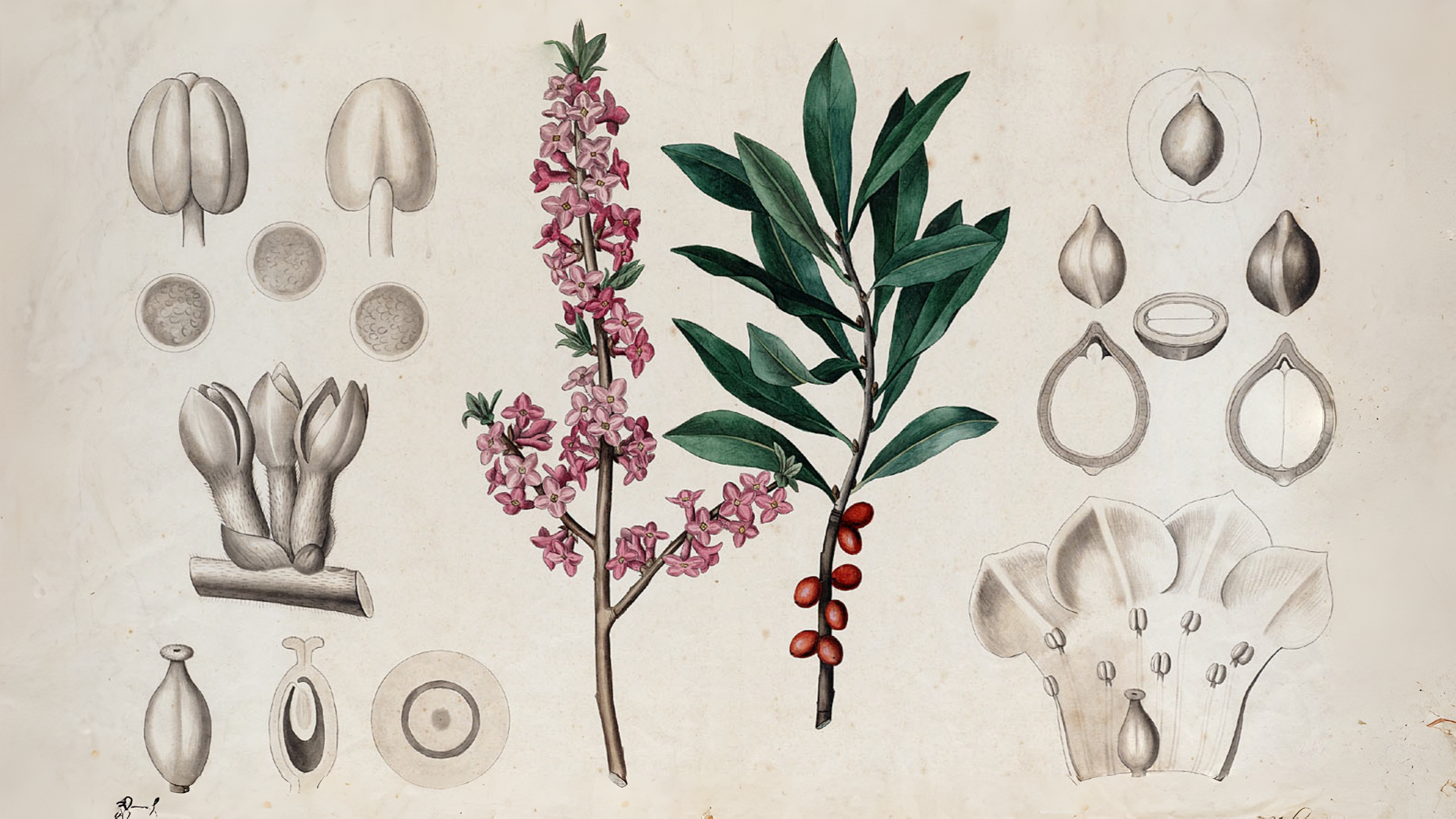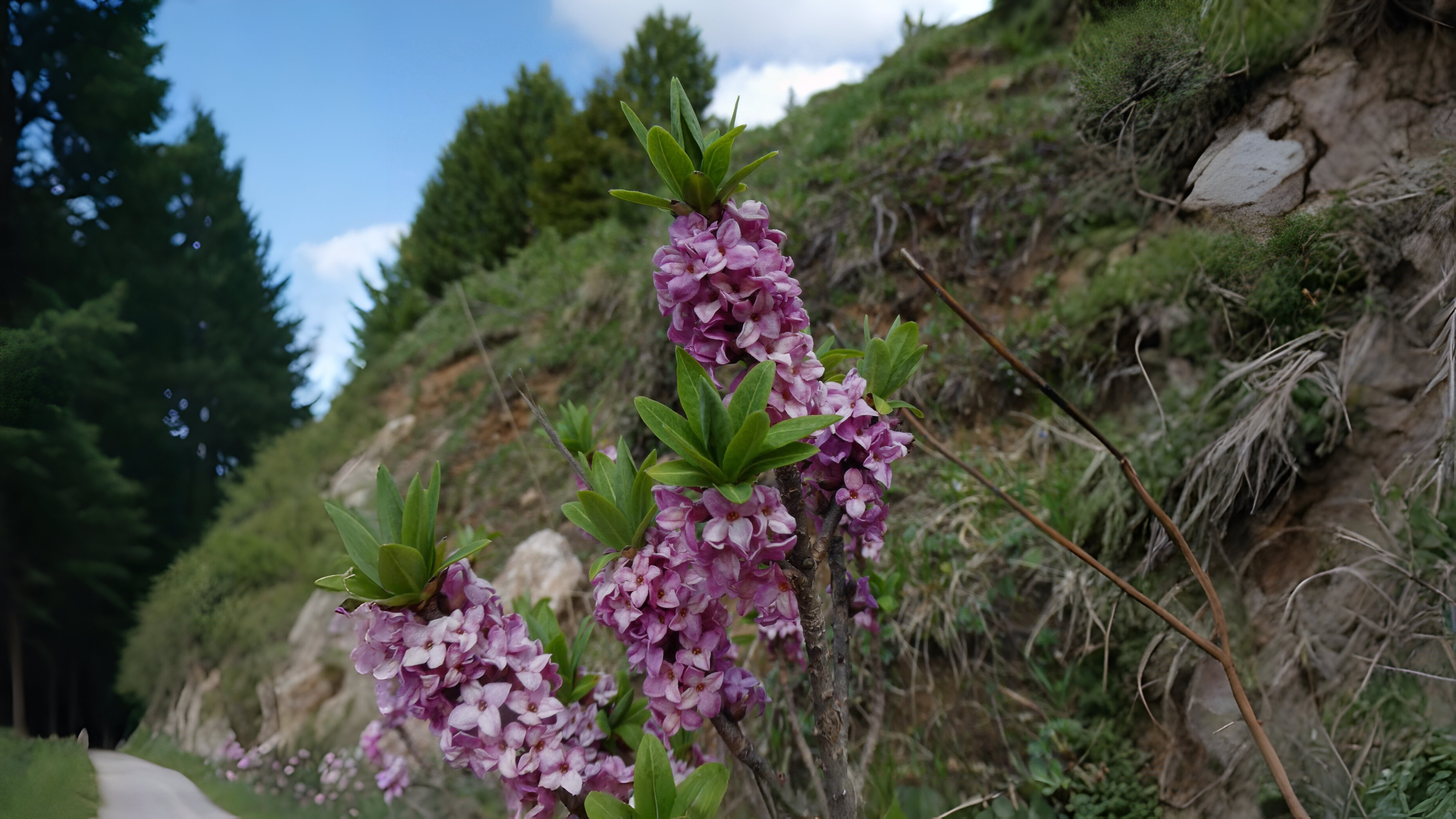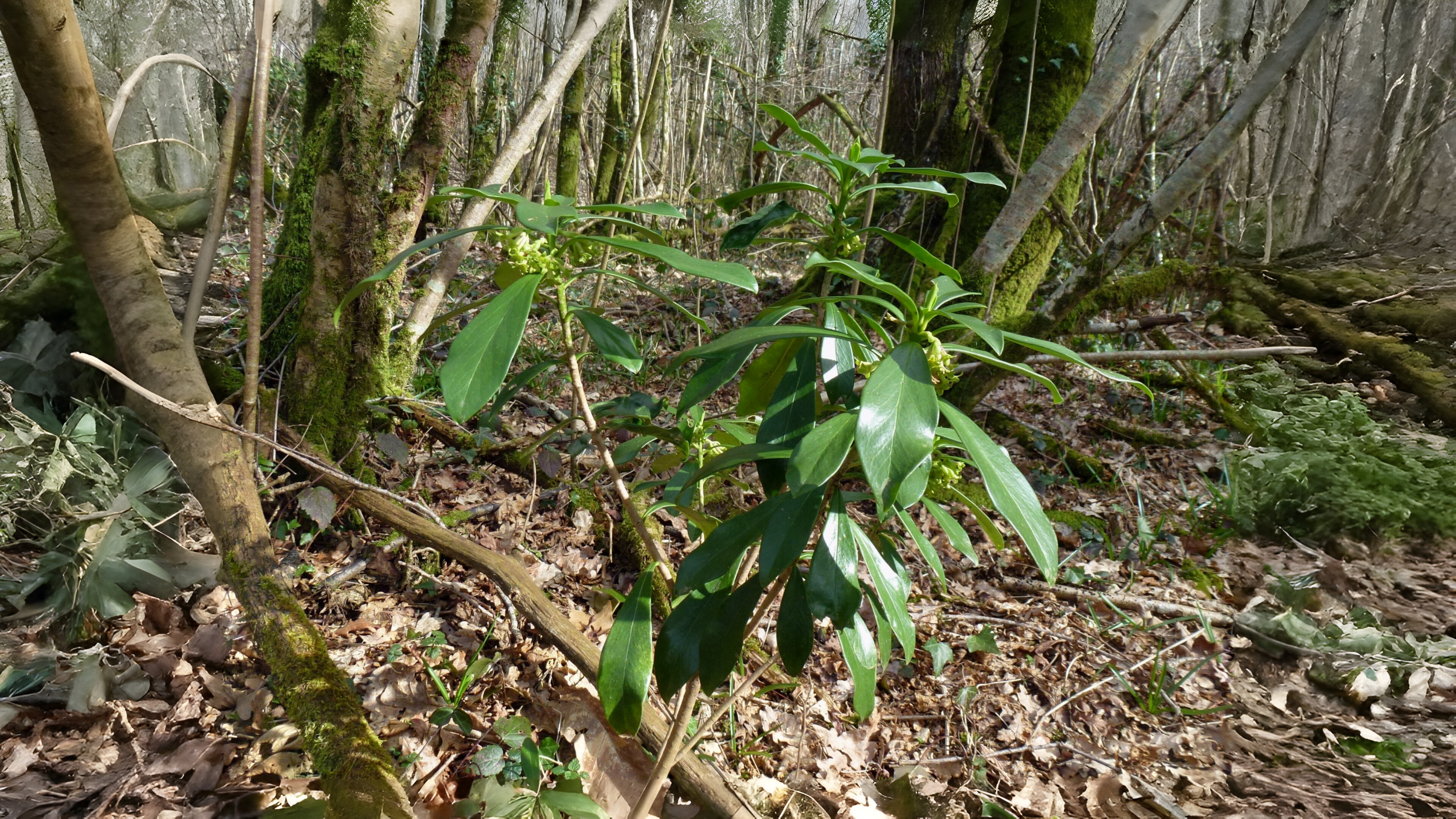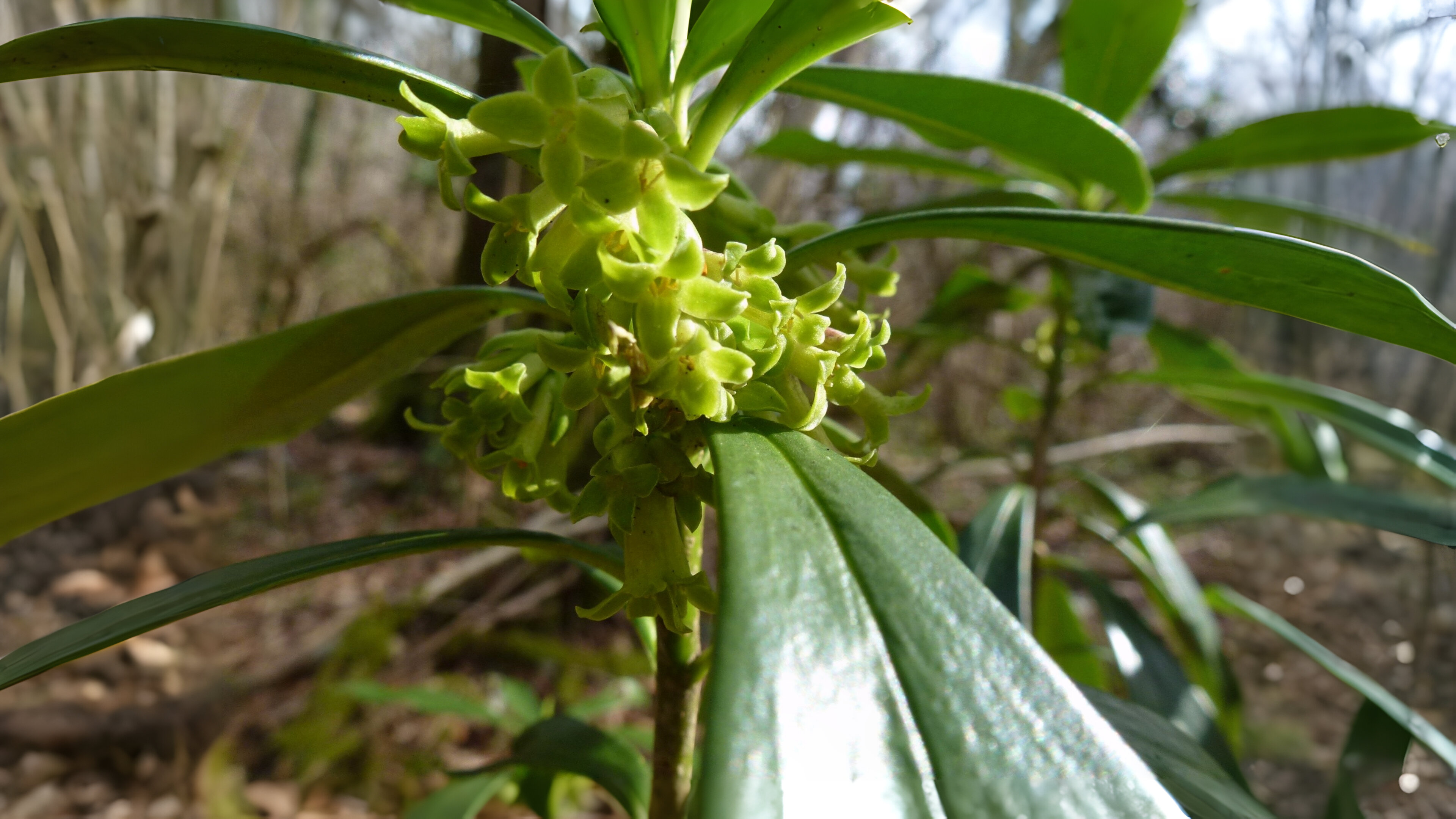It is, however, a plant of contrasts and has a dark side. Its red berries, which look like redcurrants are highly poisonous. One or two are enough to kill a child, three or four a pig, and twelve an adult human. Death is also quite unpleasant. The berries at first taste sweet, then acrid and then begin to burn. First the tongue and lips swell, then there is excessive salivation and, before death, possibly some muscle-twitching and violent diarrhoea. The berries however don’t seem to harm birds and snails even seem to relish them, even eating them while still unripe.
Mezereon has been grown in our gardens for a long time. Gerard in the sixteenth century recorded it in his garden in Holborn. It is said to look its best in full bloom after a snowfall and this may account for it also being known as the Paradise plant.
